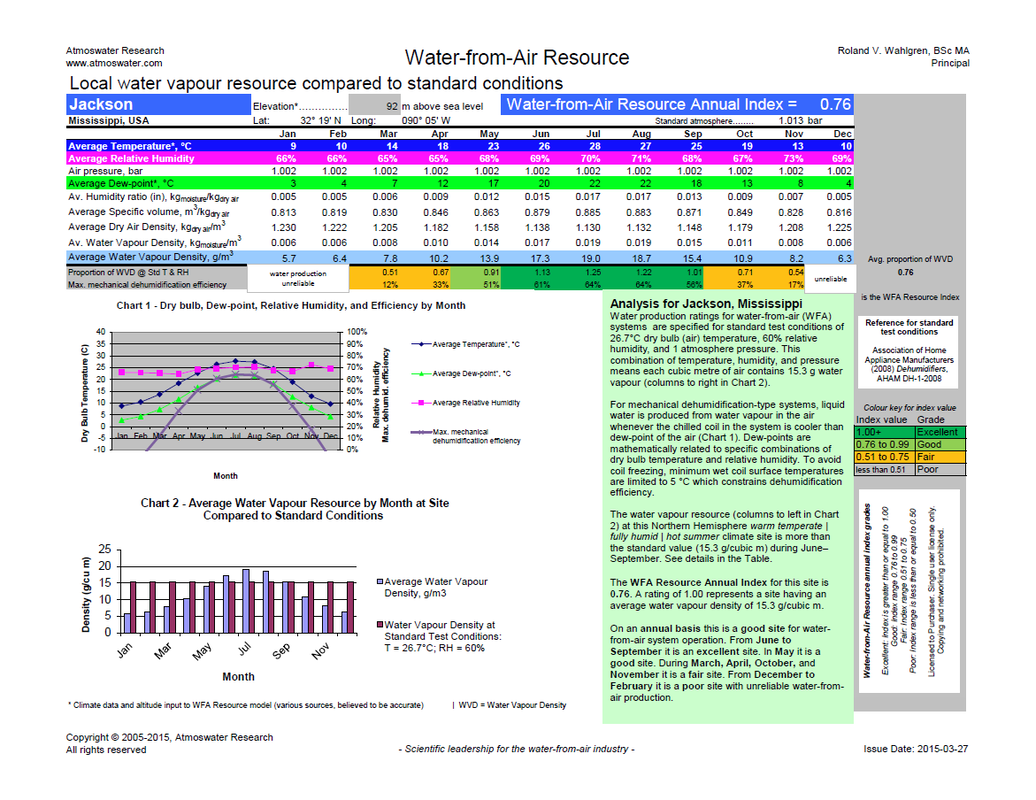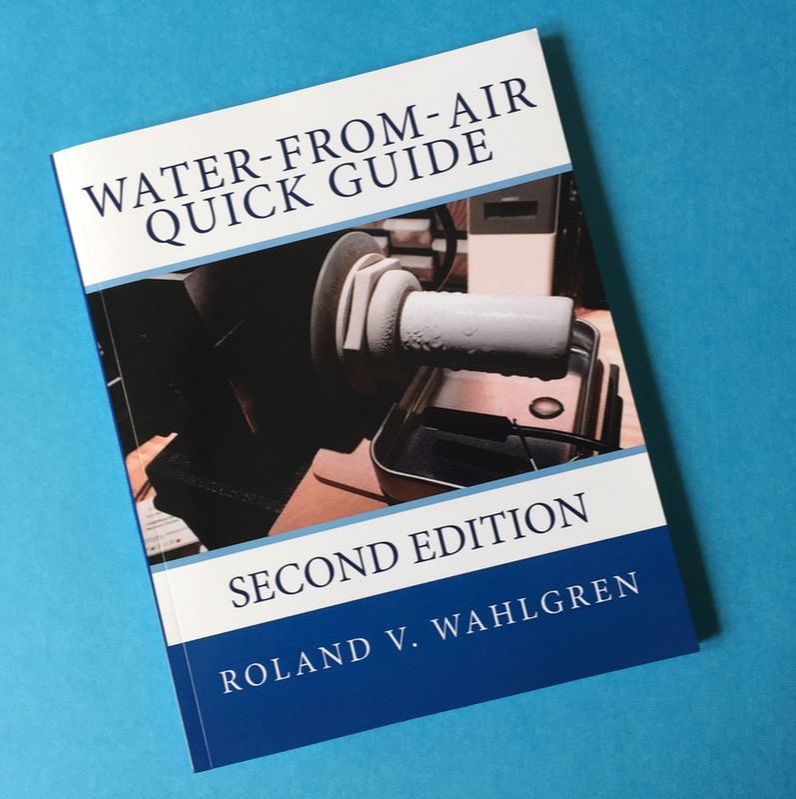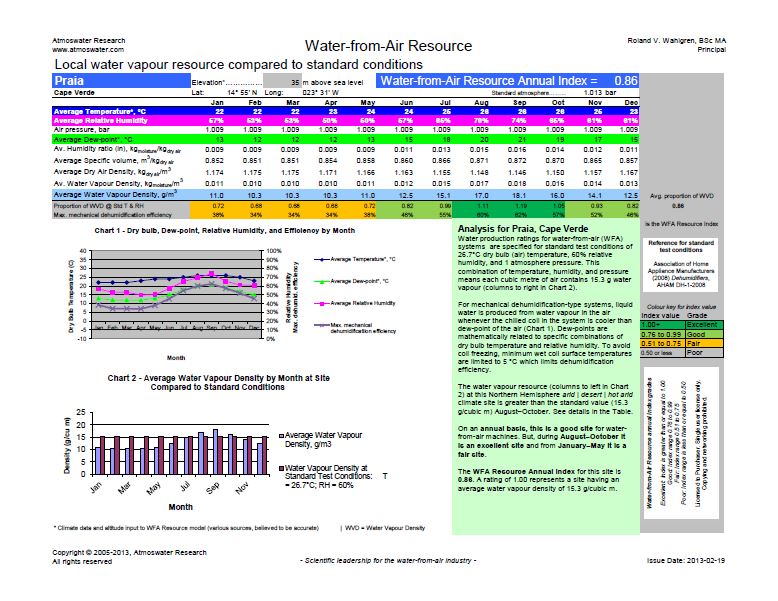The city's water system is not functioning properly following recent rains and flooding. Even before these events the water system was unreliable according to NBC News.
Is Jackson a good location for water-from-air systems? The Water-from-Air Resource Chart for Jackson grades the atmospheric water resource month-by-month. The chart is available as a free download. The monthly average dewpoint is 3 to 4 degrees C during December to February. Because these temperatures are close to the freezing point of water, some atmospheric water generator (AWG) designs may experience constraints on their water-from-air production capacity during these three months. For the balance of the year AWGs in Jackson should operate satisfactorily. See the chart for more information.




